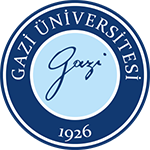ABSTRACT
Purpose:
The identifi cation of headache patients who are at risk for psychiatric comorbidity is an important quality of life and prognostic issue. The purpose of this study was to assess psychiatric comorbidity in TTH and migraine patients.
Materials and Methods:
The study group included 95 (75 female, 20 male) patients diagnosed with either migraine or TTH. All patients were requested to fi ll out a 44-item symptom list constructed according to DSM-IV diagnostic criteria for depression and anxiety disorders and to complete the Beck Depression Inventory (BDI) and Spielberger Statetrait Anxiety Inventory (STAI). After that all patients were evaluated for the presence of psychiatric disorders according to DSM-IV criteria.
Results:
Fifty-one (53.7%) patients had migraine while 44 (46.3%) had TTH and their mean ages were 32.77±7.8 and 30.32±9.4 years, respectively (p=0.11). The overall intensity levels of symptoms related to depression and anxiety were similar in both migraine and TTH patients. However, reduced libido (p=0.02), slowness (p=0.04) and nausea (p=0.003) were more intense in migraine patients. The mean BDI, SAI and TAI scores were elevated to the pathologic range in both migraine and TTH patients despite the absence of a signifi cant difference between the groups. The incidences of depression, anxiety and depression+anxiety were 37.3%, 15.7% and 9.8%, respectively, in migraine patients and 43.2%, 9.1% and 6.8%, respectively, in TTH patients (p=0.92).
Conclusion:f
Depression and anxiety disorders are common and generally similar in extent and distribution in migraine and TTH patients.



